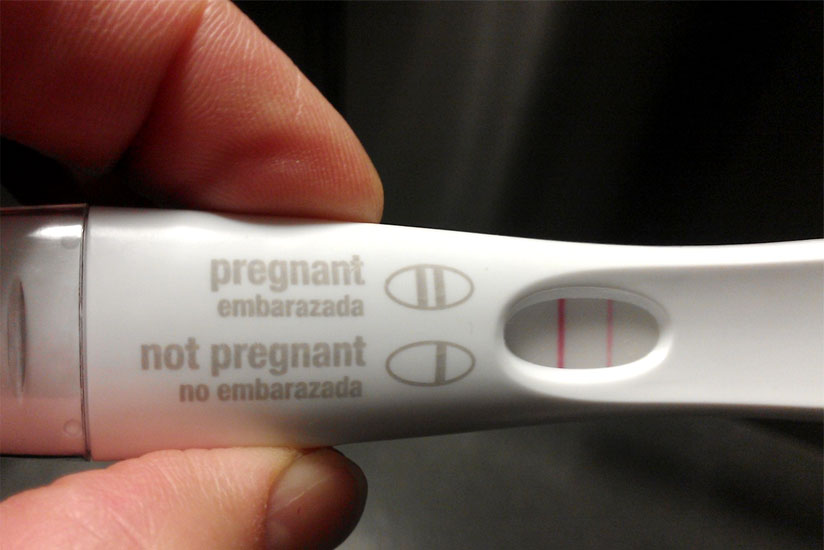Made for one purpose, inadvertently serving another almost to perfection as well. That is the story of the pregnancy test device. Like the name suggests, this machine was invented to help women carry out own pregnancy tests in the simplest manner possible, but it has been found to be effective in testing cancers such as testicular cancer and tumour of the uterus.


Made for one purpose, inadvertently serving another almost to perfection as well. That is the story of the pregnancy test device. Like the name suggests, this machine was invented to help women carry out own pregnancy tests in the simplest manner possible, but it has been found to be effective in testing cancers such as testicular cancer and tumour of the uterus.
For instance, a man posted on social media about his experience with the pregnancy test machine that turned out a health reactor.
Basically, he was in the bathroom one day and found his ex-girlfriend’s pregnancy test kit. For a bit of a laugh, he decided to pee on it. To his utter shock and surprise, the results came up with two lines. This as we all know basically means he is pregnant, right? Well obviously he is not pregnant but he thought it was really funny anyway.
He took to Reddit, a social media, where he posted the picture. In the comments, someone said: "If this is true, you should check yourself for testicular cancer and see a doctor as soon as possible.”
He was lucky this chain of events happened as when his doctor checked him over, it turned out that he had testicular cancer. He was fortunate enough to catch it in the early stages.
So what happened?
Well, the pregnancy test device is programmed to detect hormones called Human Chorionic Gonadotropin (hCG), which is produced in the placenta of a woman and is thus a good test of pregnancy.
The hormone is made by cells that form the placenta, which nourishes the egg after it has been fertilised and becomes attached to the uterine wall. Levels can first be detected by a blood test about 11 days after conception and about 12 – 14 days after conception by a urine test. HCG is a placental hormone initially secreted by cells (syncitiotrophoblasts) from the implanting during the second week of pregnancy, supporting the ovarian corpus luteum, which in turn supports the endometrial lining and therefore maintains pregnancy.
According to Dr Rachna Pande, a specialist in internal medicine at Ruhengeri Hospital, higher levels of hCG are produced by syncytiotrophoblast of the placenta formed by implantation of the ovum.
"Leutinising hormone (LH), is produced by pituitary gland in both genders, it is analogue of hCG. Levels of HCG are linked to morning sickness during early pregnancy, due to its similarity with LH,” she says.
The internist also says hCG is collected from urine of pregnant women and is used to induce ovulation, thus helping in treatment of infertility. It has also been used as a drug for weight loss due to possible effect on hypothalamus of brain but is not recommended for this purpose.
How the pregnancy test works
Remove stick from box, pee on stick, and wait for 10-15 minutes, watch to see if one line appears on the stick, if it does, then the test is negative. If two lines appear, the test is positive.
Role of hCG
Human Chorionic Gonadotropin Growth of uterus in line with fetal growth
Promotion of growth and differentiation of fetal organs
Promotion of corpus luteal progesterone production.
Helps in umbilical cord growth and development.
HCG also helps in immuno-suppression and blockage of phagocytosis of invading trophoblast cells.
The hormone stimulates metalloproteinase of cytotrophoblast cell.
Gonadotropin fertility medicines contain follicle-stimulating hormone, luteinising hormone, or both. These hormones play a central role in egg production.
In women, luteinising hormone and follicle-stimulating hormone are needed for egg production (ovulation).
Early in the menstrual cycle, a woman with low hormone levels who is not ovulating can have daily human menopausal gonadotropin (hMG) or recombinant human injections for an average of 12 days. If this helps develop mature follicles, the ovary is ready to ovulate.
In men: With low testosterone and follicle-stimulating hormone(FSH),Luteinising hormone(LH) stimulates the production of testosterone, and FSH promotes the formation of sperm. If a semen analysis, LH testing, and FSH testing suggest that abnormal hormone levels are preventing sperm production, these gonadotropins may be prescribed together to promote sperm formation.


